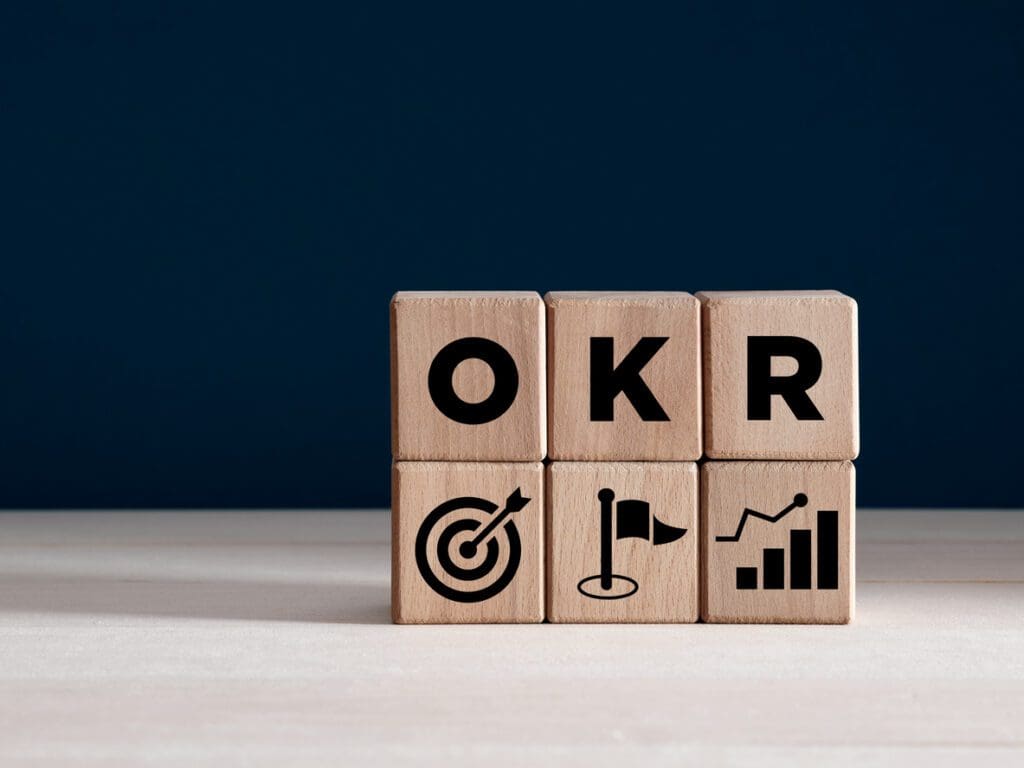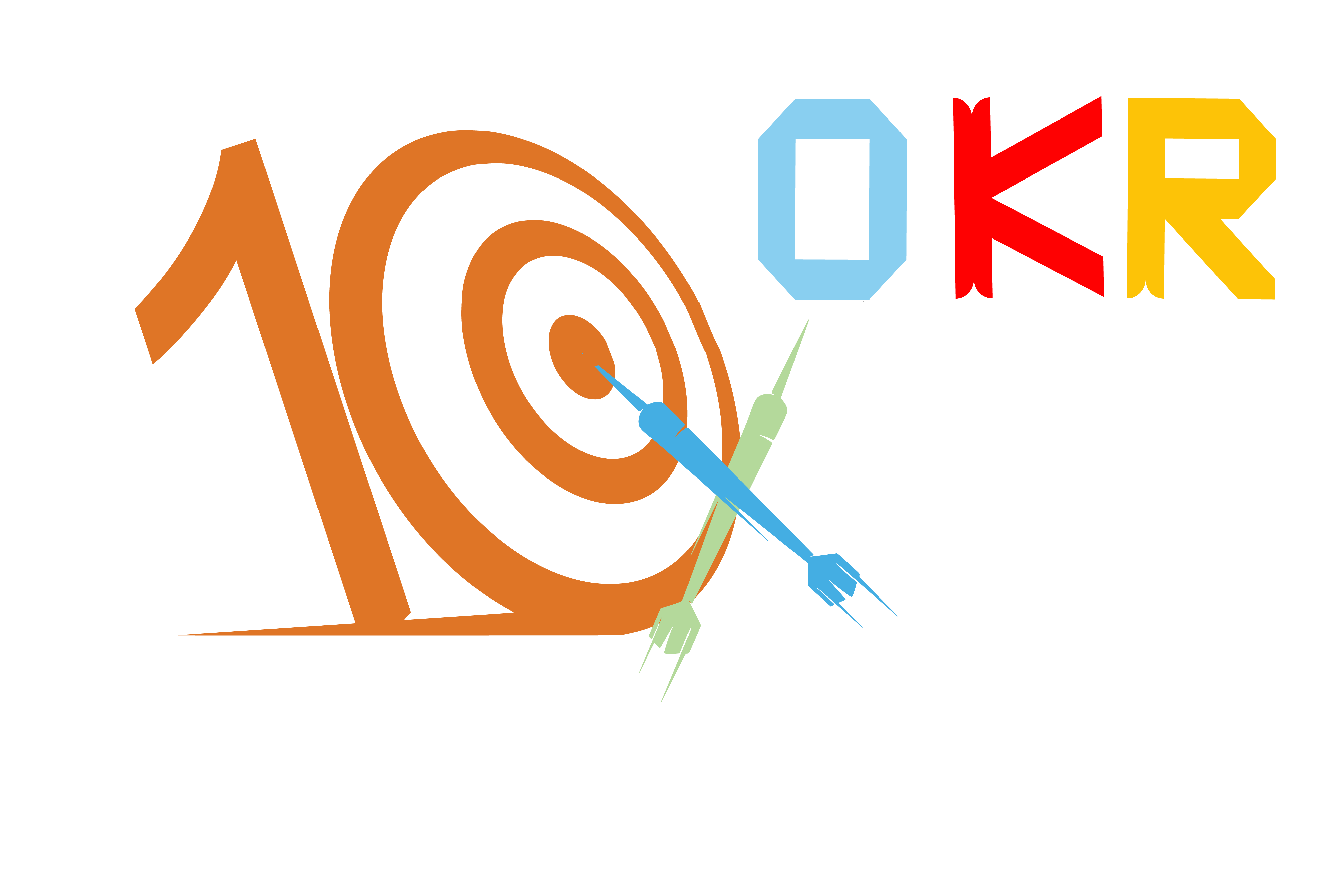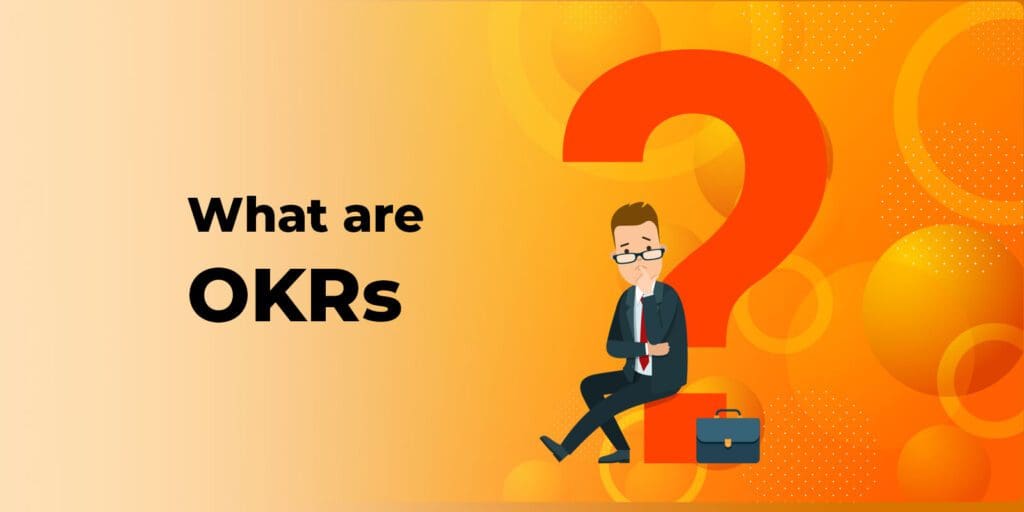Table of Contents
What are OKRs?
“What is OKR” is an increasingly common concern for new businesses aiming to refine their goal-setting processes. Goal setting is crucial for organizations to keep track of their progress, but it is equally important to have everyone be a part of the process for the organization to succeed. OKRs help in ensuring that the entire workforce is invested in achieving the goals set for them. This framework has proven to be a successful method for organizations to reach their ambitious goals.
In this article, we will look at what are OKRs and explain how this effective framework can track employee efforts and assure that their efforts are concentrated on the most impactful tasks.


OKR stands for Objectives and Key Results. It is an achievement-oriented execution framework designed to align and measure progress toward a company’s and individual’s goals. It is both straightforward and effective, hence making it useful for both startups and large corporations to execute their strategies with focus and coherence. Since they are capable of creating a high-performing and prospering company culture, they are reviewed and reassessed periodically to maintain clarity and focus. At its most basic level, they guide everyone to align and engage with measurable goals for the sake of the individual, team, or company.
Three Key Elements of OKRs
As a goal-setting framework, OKRs consist of three parts: Objectives, Key Results, and Initiatives.
Objectives are the goals that an organisation or individual wants to achieve. They help in setting goals which are qualitative. When challenging but attainable, the objectives are sometimes referred to as a “moonshot,” to maintain employee motivation. Moreover, the objectives are time-bound and inspire everyone to put in equal effort to attain the goals.
Key Results are the specific and quantifiable steps that outline the progress toward that objective within a specified timeframe. It provides specific, clear and objective ways to assess progress and success.
Initiatives trace the tasks that one must perform to achieve the target. A good metaphor would be to view the initiative as the means of transport whereby the objective is the destination and the key result is the distance one must cover.
A Brief History of OKRs
Andy Grove, the father of management science, is credited with inventing OKR. He was the former CEO of Intel. He joined the fledgling company called Intel and modified it using his management method, known as OKRs. Back then, Intel was facing rigid competition from larger companies such as Motorola as they transitioned from being a memory vendor to a microprocessor vendor. The company had larger rivals in a highly competitive market and was searching for solutions to keep up.
Objectives and Key Results provided an efficient framework for Andy Grove to explain his goals to teams around the world. Teams decided to challenge targets and execute them with extreme focus and clarity. Grove regularly reviewed progress each week, and his early feedback facilitated the teams to make quick course corrections. The results were outstanding. John Doerr, one of Grover’s seminar students, would eventually work directly with Andy Grove at Intel and become a strong believer in OKRs. He soon became a leading venture capitalist and provided investments and mentorship to companies such as Google, Amazon, Square, Uber, and so on. In 1999, he introduced OKRs to Google when they were just a company of 60 employees. Google has credited OKRs for their remarkable success.
Types of OKRs
Based on the timeframe
Long-term OKRs:
Annual objectives and long-term goals are outlined in this. Since OKRs measure progress instead of performance, these yearly goals show the long-term strategy of a company.
Quarterly OKRs:
They show the goals that need immediate attention within the next 3 months. They are adjustable since they support each quarter’s unique business demands which can change as business motives do.
Based on purpose
Aspirational OKRs:
These require the highest level of commitment. Aspirational OKRs set the most challenging goals, and are often referred to as moonshots or 10x goals. It takes more than a quarter to achieve them, during which the team is pushed to aim high. The risk of failure is significant— however, a successful result of an aspirational OKR can be achieved if 66-70% progress is made towards the goal.
Committed OKRs:
These set realistic goals that the team can achieve within a set time frame by 100%. These OKRs echo business as usual since the entire team is involved in achieving them. The key results should be clearly defined and measurable.
Learning OKRs:
these create room for exploration and experimentation. These goals help to answer queries, test hypotheses and provide insights for any future OKRs. Learning OKRs’ success is defined by the findings and whether it verifies or refutes the hypothesis.
What are the Benefits of Using OKRs?
1. Clarity and Alignment
Since OKRs encourage the breaking down of objectives into smaller, doable steps, organisations can ensure that everyone is on the same page when it comes to goals. There are clearly outlined qualitative and quantitative goals so that employees are not confused. Thus, everyone is working towards the same goals. Moreover, the process of creating the OKR methodology forces organisations to rethink their goals, how they want to achieve them, and how to measure progress. This can create a more focused and motivated team.
2. Increased Accountability
By setting specific, quantifiable key results, organisations can hold themselves and their teams accountable for their progress toward specific goals. There are regular check-ins and progress tracking measures in place. Thus, if necessary, companies can review and rectify their course of action which helps to ensure that goals are being met and that the organisation is making progress toward its objectives.
3. Transparency
Transparency about company policies and objectives is appreciated by every employee. OKRs promote transparency and create a culture of collaboration and openness. Since the objectives and key results are visible to everyone within an organisation, individuals can see what others are doing and how they are achieving their goals. This creates healthy competition and fosters a sense of teamwork. Furthermore, when progress towards objectives is transparent, individuals can understand what has been achieved and what still needs to be done, which can help to increase motivation and focus.
4. Clear Sense of Direction
OKRs ensure alignment with organisational goals, thus giving a clear understanding of what each employee needs to do within their role to make the greatest contribution possible. It provides a clear sense of direction and everyone knows what is expected of them. Employees tend to be more productive and achieve goals quicker when given proper instructions.
5. Promotes Team Engagement
The OKR framework focuses on team outcomes rather than individual accomplishments, making it the responsibility of individuals to work with the team, distribute responsibilities among team members, set individual goals accordingly, and develop a plan of action. By fostering a feeling of community and togetherness, employees feel less burdened.
6. Keeps Track of the Organisation’s progress
The progress towards goals is updated by employees every week through weekly check-ins while ensuring that the data is always current. The OKR software processes this information and provides detailed insights into progress at each level through dashboards. With a focus on setting measurable and trackable goals, it is easier to monitor progress for individuals, teams, and the organisation as a whole.
7. Helps in Quick Rectification
Since detailed insights are provided about the outcomes of every individual and team, the management can analyse and identify any potential issues. This helps in quick rectification for the smooth running of the organisation and its operations.
8. Lightning Speed
OKRs allow companies to execute their plans with clarity and lightning speed. Since the entire workforce will try to align with the overall company goals and focus on achieving them, OKRs create momentum that drives company success.
Final Remarks: Why OKRs Matter in Business?
It is essential to note that a productive framework that outlines organisational goals and results is a key factor for a business’s success. OKRs provide a structure for setting, communicating, and monitoring broad organisational goals and results. This is beneficial in aligning the business, team, and individual objectives in a measurable and hierarchical way. Moreover, startups can benefit from this achievement-oriented execution framework by having a clear vision for the company. Together, teams across the organization attain a goal or a set of goals through cross-functional OKRs. The framework can also be highly customised based on the changing demands of the company.
OKRs ensure that everyone is working towards the same goals and thus improve accountability since the teams’ goals and progress are tracked and regularly reviewed. Additionally, OKRs provide clarity on what every employee needs to do within the scope of their role to contribute to the organisation’s objectives. By outlining a clear sense of direction and improving focus, OKRs can help businesses thrive and succeed in a competitive economy.



